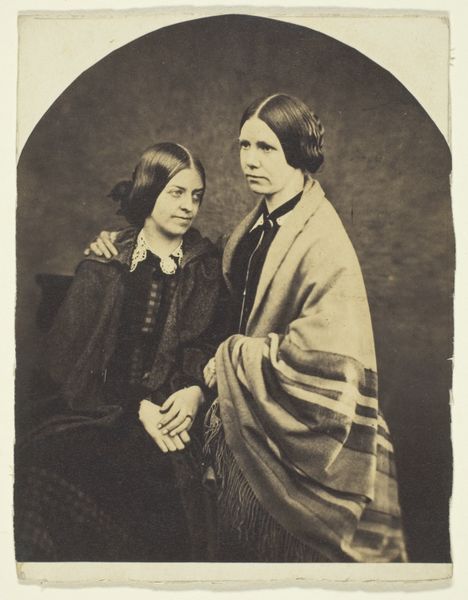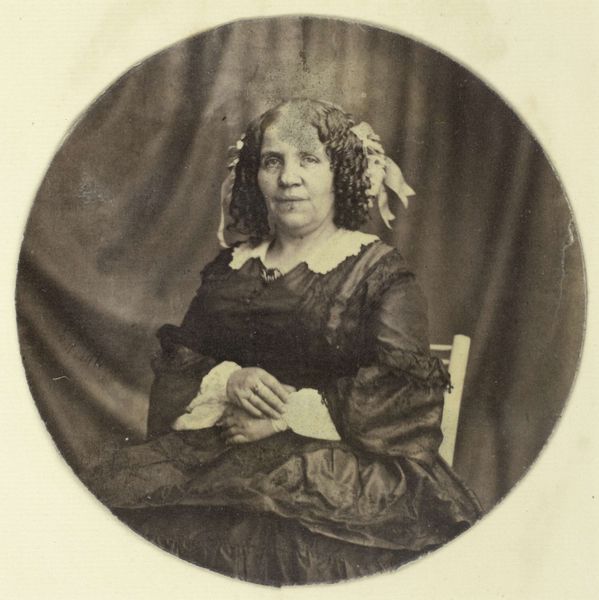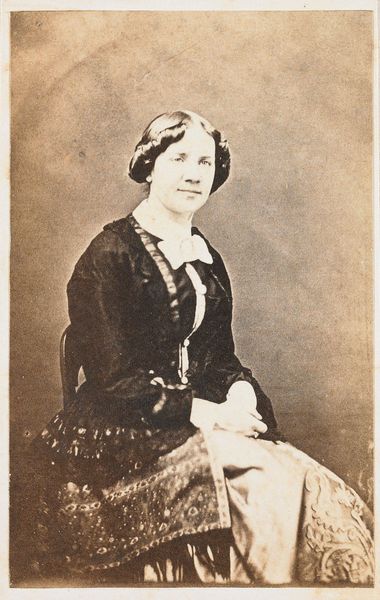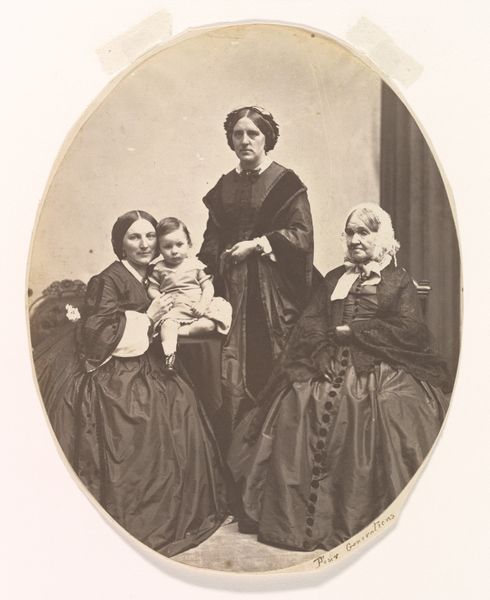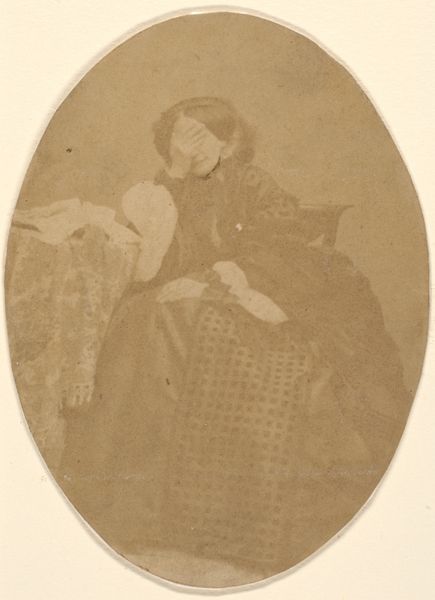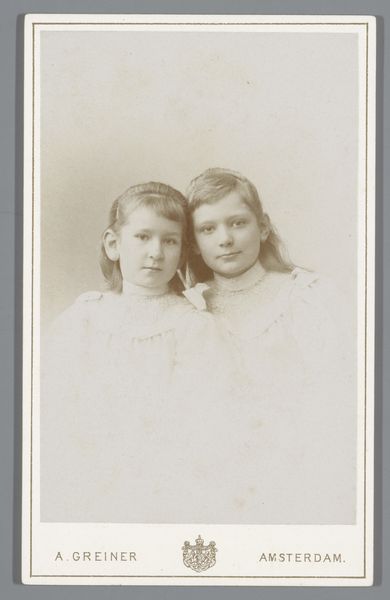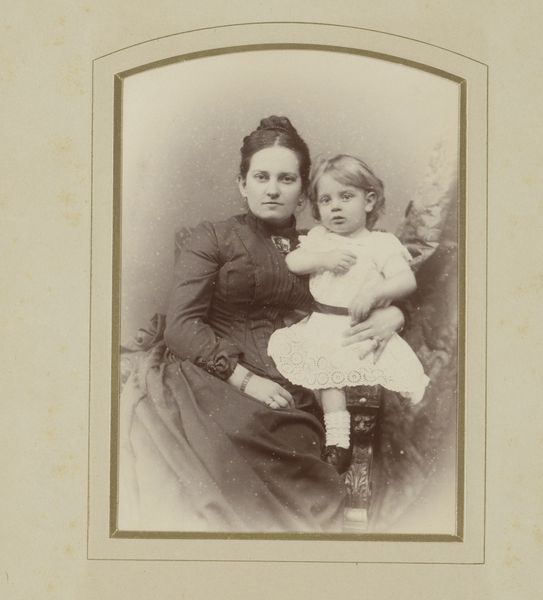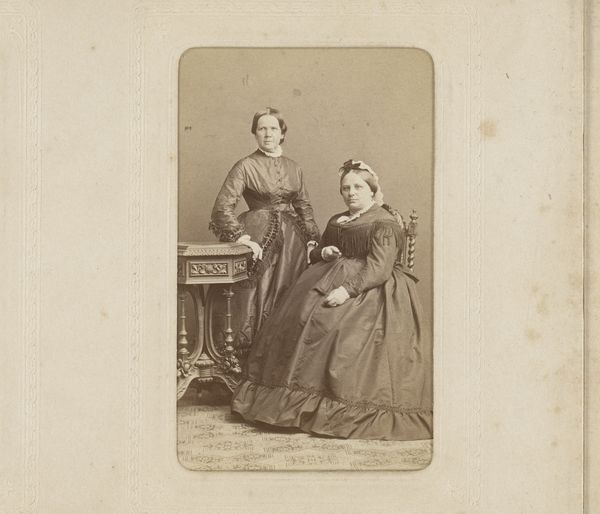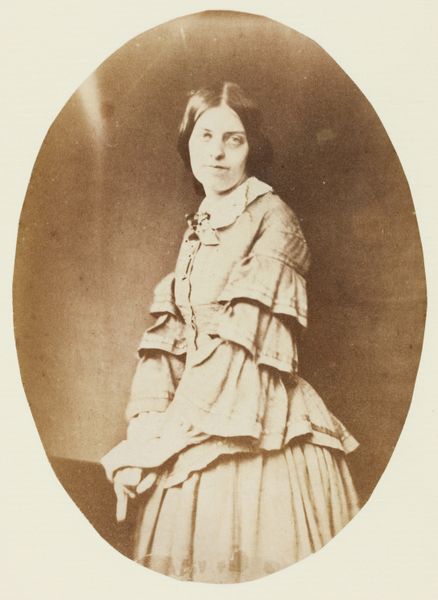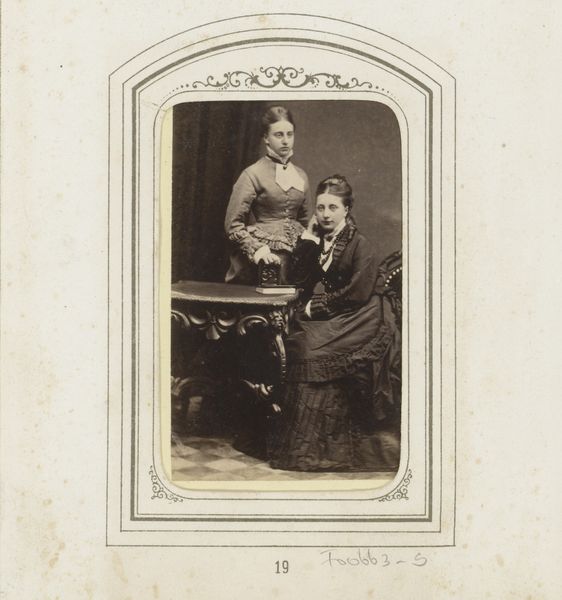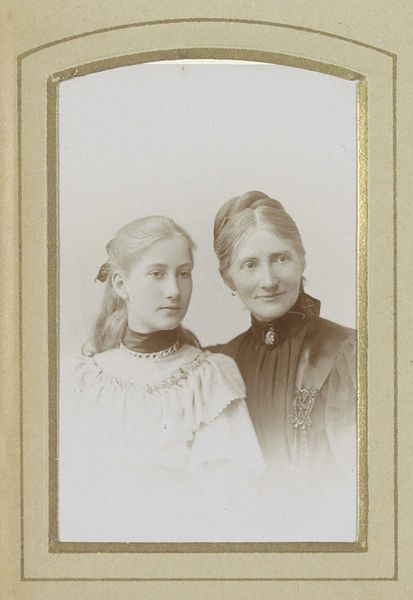
print, paper, photography, gelatin-silver-print
#
portrait
#
16_19th-century
# print
#
paper
#
photography
#
gelatin-silver-print
Dimensions: 11.7 × 8.6 cm (image/paper, oval); 17.5 × 12.7 cm (mount)
Copyright: Public Domain
Editor: Here we have a gelatin-silver print titled "Mrs. Craik," dating back to the 1850s. The figures exude a quiet intensity. What narratives do you think it evokes? Curator: Considering this was taken in the 1850s, what immediately jumps out is how photography gave women a chance to craft their own identities in a way previously dominated by male artists and perspectives. Here, are we seeing Mrs. Craik represented, or is she actively participating in the *creation* of her image? Editor: That’s fascinating! I hadn’t considered the power dynamic. Is the act of posing for the camera a statement in itself? Curator: Absolutely. Think about it: In Victorian society, where women's roles were so tightly defined, a photograph becomes a space for negotiation. What choices are *they* making about dress, pose, and expression? How much can we read the visual as a form of agency within a very rigid structure? Editor: So, we are not only viewing a portrait but an assertion of self. The simple composition suddenly seems packed with subtle, yet defiant acts of self-representation. Curator: Precisely! The print, seemingly straightforward, opens up questions about representation, female identity, and early photographic agency. Even something that looks as subtle as her choice of dress becomes an active way of creating self. Editor: Thank you for highlighting how images offer women self-making opportunities, it sheds new light on understanding the work's power. Curator: My pleasure. Always look beyond the surface. Consider, who has the power to represent whom and why? This opens us to richer, more politically charged readings.
Comments
No comments
Be the first to comment and join the conversation on the ultimate creative platform.
